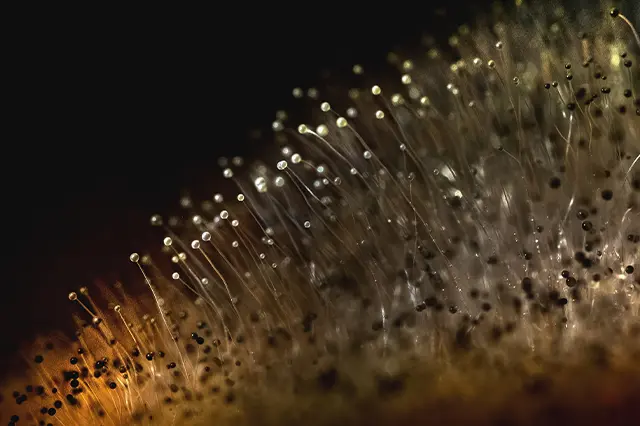Kill Mold: Know The Signs And How To Remove It Safely
Mold is a ubiquitous problem in many homes. It starts as spores that grow and multiply in moist environments, such as bathrooms or kitchens. Once it starts growing, mold can produce dangerous toxins that can cause respiratory illness, neurological damage, and even death. In this blog post, we will discuss the signs of Mold and how to remove it safely. We will also cover ways to prevent mold from starting in the first place. By following these tips, you can protect your health and keep your property clean.
What is Mold and How Does It Affect Your Home?
Mold is a type of fungus that can grow and spread quickly in damp, humid environments. It’s most commonly found in homes with water damage or leaks, but can also be brought in by pets or other people. Mold can cause health problems, including chronic asthma and allergies, as well as lung infections. It’s important to know the signs of mold and how to remove it safely if you detect it in your home.
Here are some signs to look for when diagnosing mold:
-Smelling like mildew or sap
-Yellowing or browning of walls, ceiling, furniture, and other materials
-Rusting nails or screws
-Lumpy, spongy, or “floppy” textures on surfaces
-Cannot be eliminated with a bleach or water solution
The Different Types of Mold
There are many types of mold, but they all cause similar problems. Mold grows in damp places, such as bathrooms and basements. It produces a black or brown substance called mycotoxins which can make people sick. Mold can be found in any building with a high moisture level, such as schools, hospitals, and multi-family housing.
To prevent the spread of mold, it is important to know the signs. The following are some of the most common signs that you may have mold:
-A black or brown substance on the surface of walls, ceilings, or flooring
-A strong smell (usually bad)
-People feeling sick (usually flu-like symptoms)
-Damage to property (usually from water leakage)
If you are concerned that you may have mold, it is best to contact a professional.
How to Know if Your Home Has Mold and What To Do About It
If you suspect your home may have mold, there are a few things you can do to determine for sure. Mold is an airborne fungus that can cause health problems if it’s not properly removed. Here are some signs to watch for and tips on how to remove the harmful fungus safely:
1. Look for black or brown spots on walls, ceilings, and floors – These areas are often the first sign of mold.
2. Smell anything unusual – If you notice an odor coming from your home, be sure to smell around the windows and doorsill as well. Some common signs of mold include a musty smell, sewage-like odor, or a chemical smell.
3. Check for water damage – If there has been recent flooding or leaks in your home, mold may be growing in the wet areas due to its ability to thrive in damp environments.
4. Check for damaged insulation – If there have been any structural members in your home that have been damaged (ceiling fans, roofing), this could also lead to higher levels of humidity which is ideal for mold growth.
5. Check for signs of infestation – If you notice any black, spongy, or soft patches on surfaces inside or outside your home, this may be a sign of infestation.
Once you have gathered all of the information needed to determine if your home has mold, the next step is to remove it safely. Here are some tips:
1. Assemble a team – If you’re planning to remove mold yourself, it’s important to have help. A team can work together to move furniture and other objects out of the way, open up walls, and get access to all areas of the home.
2. Use a dehumidifier – One of the best ways to reduce the amount of moisture in your home is by using a dehumidifier. This will help to reduce the number of spores that can grow and cause problems.
3. Wear protective gear – When removing mold, it’s important to wear gloves, face masks, and eye protection. All of these items can help protect you from exposure to harmful spores.
4. Use a vacuum cleaner and bucket – Once you’ve removed all of the material that’s blocking the flow of air, use a vacuum cleaner to remove any spores that may be left behind. Then, use a bucket to catch any water that may have been released, which can help to reduce the number of spores in the air.
5. Clean the area immediately – Once mold has been removed from your home, it’s important to clean the area thoroughly. This will help to prevent any future problems from occurring.
If you’re concerned about your home’s potential for mold, it’s important to take action. By following these tips, you can safely remove the fungus and ensure your health and safety.
Safe Ways to Remove Mold from Your Home
Are you worried about the presence of mold in your home? Mold is a dangerous and potentially deadly fungus, and it can grow quickly in areas with high humidity and/or moisture. If you notice any of the following signs of mold growth, it’s important to take steps to remove it:
1. Smells bad: Mold typically produces a strong odor that can be difficult to ignore. If you detect an unpleasant smell coming from your home, it’s probably best to get rid of the mold as soon as possible.
2. Severe damage: Mold can cause extensive damage if left unchecked. Signs of this damage include crumbling ceilings, collapsed walls, and ruined furniture. If you see any evidence of this damage, it’s important to take action right away and hire a professional crew to help you clean up the mess.
3. Red streaks on surfaces: Mold often leaves red streaks on surfaces where it has grown. This indicates that the fungus is actively growing, so it’s essential to act fast if you notice these signs in your home.
There are several safe ways to remove mold from your home without risking injury or health issues. Here are some tips for getting started:
1. Ventilate properly: The first step is making sure that the area containing the mold is properly ventilated. This will allow the surrounding air to circulate freely and thus help eliminate any potential threats posed by the fungus itself.
2. Use a dehumidifier: If the area containing the mold is extremely humid, you can try using a dehumidifier to reduce the level of moisture in the air. This will help to reduce the growth of mold and other dangerous fungi.
3. Clean surfaces: Once you’ve eliminated any potential sources of moisture, it’s important to clean any surfaces that were exposed to the fungus. This includes ceilings, walls, floors, and furniture. Using a safe bleach solution or a strong cleaner is often effective in removing mold from these surfaces.
4. Call a professional: If cleaning methods don’t seem to be working or if there is significant damage present, it’s best to call in a professional crew. They will be able to properly remove and kill mold and restore your home to its original condition.
Conclusion
Mold can be a serious and harmful problem in your home, especially if you’re not sure how to identify it and take the necessary steps to remove it. In this article, we will outline the key signs that suggest you may have mold growing in your residence and provide tips for safely removing it. Armed with this knowledge, you should be able to protect yourself and your loved ones from potential health risks associated with mold growth.

